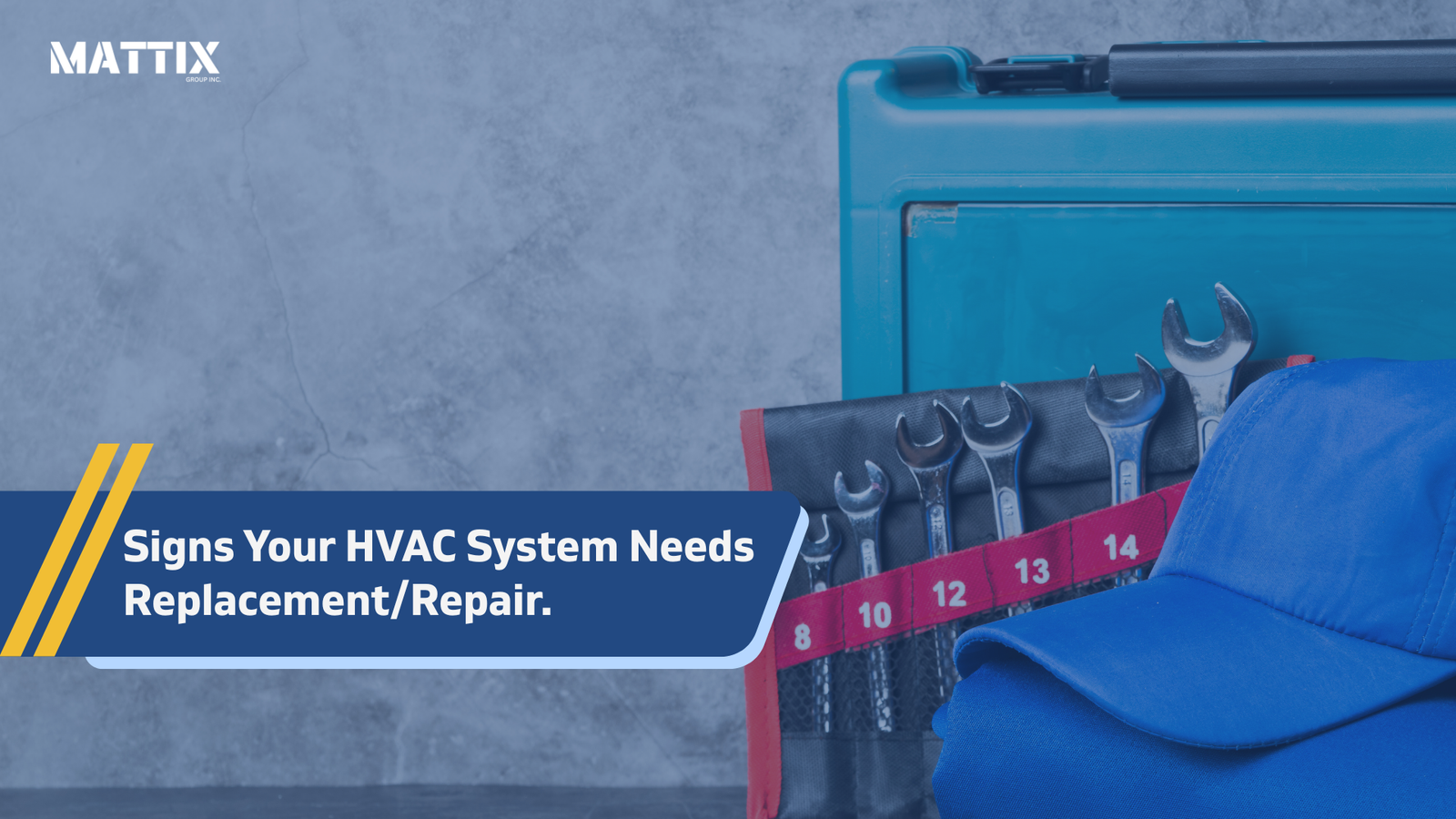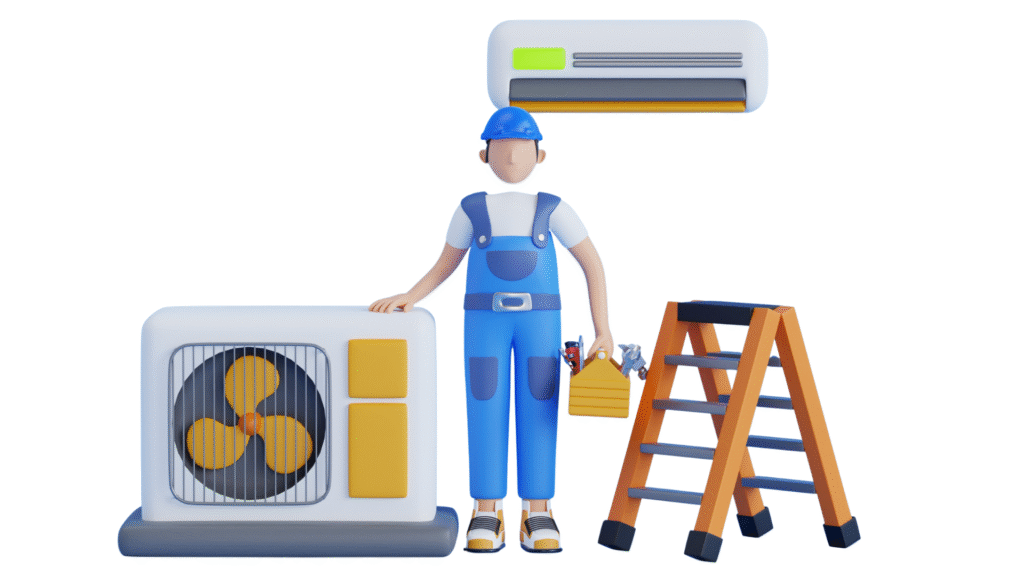
Your home has its own way of talking. You may hear a soft hum or the quiet sound of air rushing through vents. These sounds usually mean everything is fine. Your HVAC system is the heart and lungs of your home, working hard to keep you comfortable.
But what if the sounds change? A gentle hum might turn into a loud groan. You might smell something strange coming from the vents. These are not just small issues; they are important messages from your home. Your HVAC system is sending out a warning that something is wrong.
Ignoring these signs is like ignoring your car’s check engine light. It might seem okay for a bit, but a serious and expensive breakdown could be near. This guide will help you understand these warnings also you can learn to spot problems early to protect your home and save money.

Spotting HVAC Problems Early: A Homeowner’s Guide
When your HVAC system has a problem, it will let you know. You just need to know what to look for, listen for, and smell. Here are seven key warnings to pay attention to.
1. Strange Sounds: A Cry for Help
The Sound: Do you hear new or loud noises? A sudden BANG when the system turns on, a high-pitched SCREECH, or a steady CLICKING are all bad signs.
What It Means: These noises point to a mechanical problem.
- Banging or Clanking: A loud bang often means a major part is loose or broken. This could be a part in your outdoor compressor or a problem with the blower inside.
- Screeching or Whining: This sharp sound usually points to an issue with a motor’s bearings. The friction of metal on metal creates the noise as the motor is burning out.
- Rhythmic Clicking: While a single click is normal, constant clicking is not. It can signal an electrical problem, like a bad thermostat or failing control.
The Risk: These sounds are warnings of a complete system failure. A broken motor will leave you without heat or air conditioning. But a bad compressor can cost thousands to replace.
What to Do: If you hear banging or screeching, turn the system off at the thermostat and the circuit breaker. Then, call a professional. For clicking, first, try changing the thermostat batteries. If it continues, you need a service call.
2. Strange Smells From Your Vents: A Clear Warning
The Smell: Does the air from your vents have a bad odor? It might be a musty smell, like old socks, or a sharp smell of burning plastic.
What It Means: Your nose can help you find serious health and safety risks.
- Musty or Moldy: Your AC’s indoor coil is a wet place where mold can grow. That musty smell means the system is spreading mold spores through your house.
- Burning Smell: A brief dusty smell is normal when you first turn on the heat. But a lasting burning smell points to an overheating motor or a wiring problem. This is a major fire hazard.
- Rotten Eggs: If you have a gas furnace, this smell is an emergency. It signals a natural gas leak.
The Risk: Mold can cause allergies and asthma. Also a burning smell can lead to a fire. A gas leak is extremely dangerous.
What to Do: For musty smells, schedule a system cleaning. If you smell something burning, then turn off the system at the breaker right away and call for help. If you smell rotten eggs, leave your home immediately. Do not use your phone or turn on any lights. From a safe place, call 911 and your gas company.
3. High Energy Bills: A Sign of Lost Efficiency
The Bill: Have your energy bills gone up without a clear reason? A jump of 20% or more then it could be a sign of a problem.
What It Means: Your HVAC system uses the most energy in your home. If it’s not working well, your bills will go up. This can be caused by a dirty filter, dirty coils, an old motor, or low refrigerant.
The Risk: You are paying more for less comfort. That extra money could be used for maintenance or a new, more efficient unit.
What to Do: First, change your air filter. If your bills do not go back to normal in a month, then you likely have a bigger problem that needs a professional. For more details click here.
4. Hot and Cold Spots: An Uneven Home
The Problem: The thermostat says 72°F, but one room is hot and another is cold. Your home is not comfortable.
What It Means: This shows a problem with air delivery. It could be caused by leaky ducts, a weak blower motor, or a system that is the wrong size for your home.
The Risk: Your system runs all the time to try to heat or cool your home, which wastes energy and money. This also causes extra wear and tear on the system.
What to Do: Check that all your vents are open and not blocked by furniture. If that doesn’t fix it, then you may have a ductwork or system problem that needs an expert.
5. Water Leaks: A Sign of a Blockage
The Puddle: Do you see water pooling around your indoor furnace or air handler?
What It Means: Your AC removes water from the air. This water should go down a drain line. A puddle means the line is clogged.
The Risk: Water can damage your floors and rust your furnace parts. It can also cause mold to grow.
What to Do: Turn off your system to stop more water from being made. You can try to clear the clog with a wet/dry vac on the outside drain pipe, but it’s best to call a pro if you are not sure.
6. Constant Cycling: On and Off Again
The Pattern: First of all, does your system seem to turn on and then off every few minutes?
What It Means: If so, this damaging pattern is called “short cycling.” Essentially, it can be caused by several issues, for instance, an oversized system, low refrigerant, or even a dirty filter. Ultimately, it stops your home from getting properly heated or cooled.
The Risk: Consequently, short cycling wears out your system very quickly. Specifically, the startup is the hardest part for the compressor and motors. Therefore, this can eventually lead to the failure of expensive parts.
What to Do: In this case, your first step should be to check and change your air filter. However, if the problem continues, you should then turn off the system and call a technician.
7. Weak Airflow: Not Enough Power
The Feeling: Next, consider the airflow. Is the air coming from your vents weak instead of the strong flow you are used to?
What It Means: In short, the airflow is blocked. This could be due to a very dirty filter, a failing blower motor, or furthermore, a frozen coil.
The Risk: As a result, weak airflow means your home won’t get comfortable. Consequently, the system will run constantly, which in turn raises your bills and can eventually cause parts to fail.
What to Do: For this reason, the most common cause is a dirty air filter. Accordingly, you should check it and replace it if needed. On the other hand, if that doesn’t help, the blockage is clearly deeper in the system and, therefore, needs a professional to fix.

Repair or Replace? A Smart Guide for HVAC
When a technician gives you a large repair bill, it can be stressful. But think of it as a business decision.
The $5,000 Rule:
Multiply the age of your HVAC unit by the repair cost. If the number is over $5,000, it’s usually better to replace it.
- Example: Your 13-year-old AC needs a $1,800 repair.
- Math: 13 years x $1,800 = $23,400.
- Decision: This is much higher than $5,000. It is not a good investment to put a lot of money into an old system.
Age and Technology:
HVAC systems don’t last forever (ACs: 12-15 years; Furnaces: 15-20 years). If your unit is old, a big repair is often the first of many. Also, new systems are much more efficient and can save you money on energy bills.
The “Rule of Threes” for HVAC:
Have you paid for more than two big repairs (over $300) in the last two years? If so, your system is no longer reliable.
Be Proactive: Take Control of Your HVAC
You can avoid many problems by being proactive instead of reactive.
Your Monthly 5-Minute Check:
- Filter Check: If your filter is dirty, change it.
- Vent Check: Make sure all vents are open and clear.
- Outdoor Unit Scan: Gently hose down your outdoor unit to clear away dirt and leaves.
- Drain Line Look: Check for any water near your indoor unit.
Bi-Annual Professional Tune-Up:
This is the best way to keep your system healthy. A technician can clean and inspect key parts, test electrical components, and find small problems before they become big ones.
Protect Your Home(HVAC)
Your HVAC system is key to your home’s comfort and safety. By learning its language, you can spot problems early and make smart choices. This will help you keep your home the safe and comfortable place it should be.
Don’t wait for a small problem to become a big one.
Ready to make sure your system is in top shape? Schedule Now for Your Professional HVAC Tune-Up and Inspection Today


1 comment on “HVAC: When to Fix It or Get a New One”